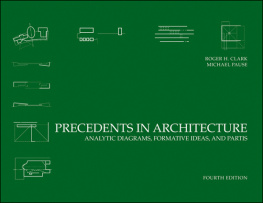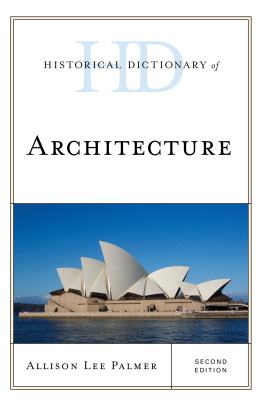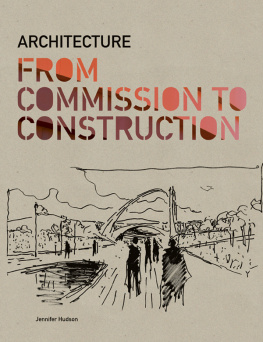Copyright 2012 by John Wiley & Sons, Inc. All rights reserved
Published by John Wiley & Sons, Inc., Hoboken, New Jersey
Published simultaneously in Canada
No part of this publication may be reproduced, stored in a retrieval system, or transmitted in any form or by any means, electronic, mechanical, photocopying, recording, scanning, or otherwise, except as permitted under Section 107 or 108 of the 1976 United States Copyright Act, without either the prior written permission of the Publisher, or authorization through payment of the appropriate per-copy fee to the Copyright Clearance Center, 222 Rosewood Drive, Danvers, MA 01923, (978) 750-8400, fax (978) 646-8600, or on the web at www.copyright.com . Requests to the Publisher for permission should be addressed to the Permissions Department, John Wiley & Sons, Inc., 111 River Street, Hoboken, NJ 07030, (201) 748-6011, fax (201) 748-6008, or online at www.wiley.com/go/permissions .
Limit of Liability/Disclaimer of Warranty: While the publisher and the author have used their best efforts in preparing this book, they make no representations or warranties with respect to the accuracy or completeness of the contents of this book and specifically disclaim any implied warranties of merchantability or fitness for a particular purpose. No warranty may be created or extended by sales representatives or written sales materials. The advice and strategies contained herein may not be suitable for your situation. You should consult with a professional where appropriate. Neither the publisher nor the author shall be liable for any loss of profit or any other commercial damages, including but not limited to special, incidental, consequential, or other damages.
For general information about our other products and services, please contact our Customer Care Department within the United States at (800) 762-2974, outside the United States at (317) 572-3993 or fax (317) 572-4002.
Wiley also publishes its books in a variety of electronic formats. Some content that appears in print may not be available in electronic books. For more information about Wiley products, visit our web site at www.wiley.com .
Library of Congress Cataloging-in-Publication Data:
Clark, Roger H.
Precedents in architecture : analytic diagrams, formative ideas, and partis / Roger H. Clark, Michael Pause. 4th ed.
p. cm.
Includes index.
ISBN 978-0-470-94674-9 (pbk. : alk. paper); ISBN 978-1-118-17049-6 (ebk);
ISBN 978-1-118-17050-2 (ebk); ISBN 978-1-118-17082-3 (ebk);
ISBN 978-1-118-17083-0 (ebk); ISBN 978-1-118-17084-7 (ebk)
1.Architectural design. I. Pause, Michael. II. Title. III. Title: Analytic diagrams, formative ideas, and partis.
NA2750.C55 2012
720dc23
2011030358
A Google Earth database for the buildings featured in this book is available at www.wiley.com/go/precedentsinarchitecture .
To Judy and Kathy
PREFACES
PREFACE TO THE FIRST EDITION
This book is about architecture.
In particular, it focuses on a way of thinking about architecture that emphasizes what is in essence the same, rather than different. Our concern is for a continuous tradition that makes the past part of the present. We do not wish to aid the repetition or revival of style whether in whole or part. Rather, by a conscious sense of precedent that identifies patterns and themes, we hope to pursue archetypal ideas that might aid in the generation of architectural form.
While architecture embodies many realms, we concentrate on built form. Without apology, we make no attempt to discuss the social, political, economic, or technical aspects of architecture. The domain of design ideas lies within the formal and spatial realm of architecture, and thus it is this arena that is explored in this book.
Obviously, a sound architectural idea will not, as a tool for design, inevitably lead to a good design. One can imagine many undesirable buildings which might originate with formative ideas. To be sensitive to the potential of archetypal pattern in design does not lessen the importance of concern for other issues or for the building itself. However, one commonality shared by the great buildings of this era with those of the past is a demonstrated understanding of basic architectural ideas which are recognizable as formative patterns.
Our analysis and interpretations are of built form and, therefore, may not necessarily coincide with the architects intentions or the interpretations of others. The analysis is not all-inclusive in that it is limited to characteristics which can be diagrammed.
The intentions of this study are to assist the understanding of architectural history, to examine basic similarities of architects designs over time, to identify generic solutions to design problems which transcend time, and to develop analysis as a tool for design. Of importance is the development of a vehicle for the discussion of ideas through the use of example. The understanding of history derived from this kind of investigation can only be obtained by far greater labor than that involved in acquiring a knowledge of history that focuses on names and dates. The reward for this effort is a design vocabulary that has evolved and been tested over time. We believe designers benefit from a comprehensive understanding of formative ideas, organizational concepts, and partis.
As a resource, this book offers factual graphic information on 64 buildings, a detailed analysis of each of these buildings, a range of designs by individual architects, a compilation of formative ideas for design generation, a collection of architectural images, and a reference for a technique of analysis. Some of this information is not readily available in other sources.
We are indebted to the Graham Foundation for Advanced Studies in the Fine Arts for support to make this study possible.
Any effort of this nature is the fruit of many encounters with individuals and ideas, but one debt in particular stands out as significant. Through a series of conversations with George E. Hartman, Jr., several years ago, some of our thoughts and ideas about architecture and history were focused. Since that time, he has continuously and enthusiastically offered support and encouragement. James L. Nagel, Ludwig Glaser, William N. Morgan, and the late William Caudill each generously sponsored our efforts to secure assistance from the Graham Foundation. Roger Cannon, Robert Humenn, and Debbie Buffalin provided valuable help in locating material and information. For their assistance and support we thank several persons in the School of Design: Dean Claude E. McKinney, Winifred Hodge, the secretaries, and the librarians. The students in our classes have enriched, stimulated, and challenged our ideas, and encouraged us to record them in this volume. We fully acknowledge our debt to them.
A special acknowledgment is reserved for Rebecca H. Mentz and Michael A. Nieminen, whose considerable talents were used to draw the sheets reproduced in this volume. Without their skill, patience, diligence, and dedication this volume would not have been possible.
Our gratitude is extended to our families who have aided our efforts through sacrifice, devotion, and understanding.
To all other persons who have encouraged or in some way contributed to this study we collectively give thanks.
By making available the information that is presented in this volume, we hope to expand the understanding of precedents in architecture; to illustrate an educational technique that is useful to students, educators, and practitioners; and to demonstrate an analytic technique that can have impact on architectural form and space decisions.











